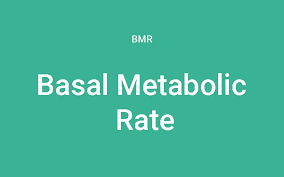A lean body mass calculator with body fat percentage is a useful online tool that helps you estimate your lean body mass (LBM) based on your body fat percentage. By using a reliable calculator, you can easily monitor your progress towards achieving a healthier, more functional body. Keep reading to learn more about the benefits of using a lean body mass calculator with body fat percentage and how it can help you reach your fitness goals.
Lean Body Mass Calculator
Your Lean Body Mass (LBM):
LBM %:
Body Fat %:
| Formula | LBM | Body Fat |
|---|
[ez-toc]
What is lean body mass?
In the fitness world, there's a lot of talk about lean body mass (LBM) – but what exactly is it? For those aiming to achieve optimal health and body composition, understanding lean body mass is crucial. In this comprehensive guide, we'll dive into the concept of LBM, why it's important, and how you can improve it to unlock your body's true potential.
What is Lean Body Mass?
Lean body mass, simply put, is the weight of everything in your body except for fat. This includes your muscles, bones, organs, and connective tissues. LBM is a crucial aspect of body composition, which refers to the proportion of fat mass and lean mass in your body. A higher percentage of lean mass is generally associated with better overall health and fitness levels.
The Importance of Lean Body Mass
Supports metabolism: Lean body mass is directly linked to your metabolic rate, which determines how many calories your body burns at rest. A higher LBM means your body will burn more calories throughout the day, helping with weight management and promoting overall health.
Enhances physical performance: Lean mass, particularly muscle mass, is crucial for physical strength and endurance. Improving your LBM can lead to better athletic performance and make daily activities, like climbing stairs or carrying groceries, much easier.
Promotes healthy aging: As we age, maintaining lean body mass becomes increasingly important. A higher LBM can help prevent age-related muscle loss (sarcopenia), improve bone density, and decrease the risk of falls and fractures.
How to Increase Lean Body Mass
Resistance training: Engaging in regular strength training exercises, such as weightlifting or bodyweight exercises, is essential for increasing muscle mass and overall LBM.
Adequate protein intake: Consuming sufficient protein is vital for muscle repair and growth. Aim for a balanced diet that includes high-quality protein sources like lean meats, fish, dairy, legumes, and nuts.
Proper recovery: Giving your body time to rest and recover is crucial for muscle growth. Ensure you get enough sleep and consider incorporating active recovery techniques, like stretching or foam rolling, into your routine.
Monitor body composition: Keep track of your body composition by measuring your body fat percentage and lean mass. This will help you understand the effectiveness of your training and nutrition strategies and make adjustments as needed.
Understanding and focusing on lean body mass is a game-changer in your journey towards a healthier and more functional body. By incorporating strength training, maintaining a balanced diet, and prioritizing recovery, you can improve your LBM and enjoy the numerous benefits it brings to your overall health and well-being.
How to calculate lean body mass
Your body is made up of various components, including muscle, fat, bone, organs, and fluids. Lean body mass (LBM) refers to the weight of all these components except for fat. Calculating your LBM can help you understand your body composition and determine whether you have a healthy balance of fat and lean mass. In this guide, we'll walk you through how to calculate your LBM using simple formulas and tools.
Method 1: The Body Fat Percentage Formula
The most common way to calculate LBM is by using your body fat percentage. This method requires measuring your body fat percentage first, which can be done using various tools, including skinfold calipers, bioelectrical impedance scales, or dual-energy x-ray absorptiometry (DEXA) scans. Once you have your body fat percentage, you can calculate your LBM using the following formula:
LBM = Total body weight x (1 - Body fat percentage)
For example, if your total body weight is 150 pounds and your body fat percentage is 25%, your LBM would be:
LBM = 150 x (1 - 0.25) = 112.5 pounds
Method 2: The BMI Formula
Another way to estimate your LBM is by using your body mass index (BMI), which is a measure of your body fat based on your height and weight. While BMI is not as accurate as body fat percentage, it can provide a rough estimate of your LBM. You can calculate your LBM using the following formula:
LBM = Total body weight x (1 - BMI/100)
For example, if your total body weight is 150 pounds and your BMI is 25, your LBM would be:
LBM = 150 x (1 - 0.25) = 112.5 pounds
Method 3: Online Calculators
If you don't want to do the math yourself, there are several online LBM calculators available that can help you estimate your LBM based on your body weight, height, and age. These calculators use algorithms that take into account various factors that affect body composition, such as gender and fitness level.
Lean Body Mass Formulas for Adults and Children
Lean body mass (LBM) is a crucial component of overall health and fitness. It refers to the weight of everything in your body except for fat, including muscle, bones, organs, and connective tissue. Knowing your LBM can help you understand your body composition and determine whether you have a healthy balance of fat and lean mass. In this guide, we'll cover the most accurate and reliable formulas for calculating LBM in both adults and children.
Formula 1: The Hume Formula for Adults
The Hume formula is one of the most accurate and widely used formulas for calculating LBM in adults. It takes into account age, gender, and body weight to provide a precise estimate of lean mass. Here's how to use the Hume formula:
LBM (in kg) = 0.32810 x weight (in kg) + 0.33929 x height (in cm) - 29.5336 + 36.0945 x gender (1 for males, 0 for females)
For example, if you are a 35-year-old male weighing 80 kg and measuring 180 cm in height, your LBM would be:
LBM = 0.32810 x 80 + 0.33929 x 180 - 29.5336 + 36.0945 x 1 = 62.1 kg
Formula 2: The Katch-McArdle Formula for Adults
The Katch-McArdle formula is another reliable formula for calculating LBM in adults. It takes into account not only body weight but also body fat percentage, making it more accurate than other formulas. Here's how to use the Katch-McArdle formula:
LBM (in kg) = weight (in kg) x (100 - body fat percentage) / 100
For example, if you are a 35-year-old female weighing 60 kg and your body fat percentage is 25%, your LBM would be:
LBM = 60 x (100 - 25) / 100 = 45 kg
Formula 3: The Pediatric Formulas for Children
Calculating LBM in children is slightly different from adults due to differences in body composition and growth patterns. There are several formulas available for calculating LBM in children, including the following:
The Fomon Formula: LBM (in kg) = 3.8 x weight (in kg) + 7
The Slaughter Formula: LBM (in kg) = 0.91 x weight (in kg) - 36.8
The Schaefer Formula: LBM (in kg) = 0.485 x weight (in kg) + 0.111 x height (in cm) - 3.166
Calculating lean body mass is a powerful way to understand your body composition and track your progress towards achieving optimal health and fitness levels. Whether you choose to use the Hume formula, the Katch-McArdle formula, or a pediatric formula for children, knowing your LBM can help you set realistic goals, tailor your nutrition and exercise routines, and make informed decisions about your health. Remember, achieving a healthy balance of fat and lean mass is crucial for overall health and well-being, regardless of age or gender.
Lean Body Mass vs. Fat Free Mass
Body composition refers to the proportion of fat mass and lean mass in your body. Fat mass is the weight of your body fat, while lean mass is the weight of everything in your body except for fat, including muscle, bone, organs, and connective tissue. While lean body mass (LBM) and fat-free mass (FFM) are often used interchangeably, there are subtle differences between the two. In this guide, we'll explore the difference between LBM and FFM and why understanding both is crucial for achieving optimal health and fitness levels.
What is Lean Body Mass?
Lean body mass refers to the weight of everything in your body except for fat. This includes muscle, bone, organs, and connective tissue. LBM is a crucial component of body composition and is associated with better overall health and fitness levels. A higher percentage of LBM is generally considered a positive indicator of health and wellness.
What is Fat-Free Mass?
Fat-free mass refers to the weight of everything in your body except for fat, including muscle, bone, organs, and connective tissue, as well as fluids like blood and lymph. Unlike LBM, FFM includes fluids in addition to solid tissue. FFM is a useful measure of body composition and is often used in scientific research to study body composition changes over time.
How to Calculate Lean Body Mass and Fat-Free Mass
There are several methods for calculating LBM and FFM, including:
Dual-energy X-ray absorptiometry (DEXA): This is the most accurate method for measuring body composition, as it can differentiate between bone, muscle, and fat tissue.
Bioelectrical impedance analysis (BIA): This method uses a low-level electrical current to measure body composition. While less accurate than DEXA, BIA is a simple and non-invasive way to estimate LBM and FFM.
Skinfold calipers: This method involves measuring skinfold thickness at various sites on the body and using those measurements to estimate body composition.
Anthropometric measurements: This method involves measuring body circumference and skinfold thickness to estimate body composition.
Improving Body Composition
Improving body composition involves reducing body fat while maintaining or increasing LBM or FFM. The most effective ways to improve body composition include:
Resistance training: Engaging in regular strength training exercises can help increase muscle mass and LBM.
Proper nutrition: Consuming a balanced diet that includes sufficient protein is vital for maintaining or increasing LBM and FFM.
Cardiovascular exercise: Incorporating regular cardio exercise into your routine can help burn fat and improve overall fitness levels.

Lean Body Mass Calculator with Body Fat Percentage
Body composition refers to the proportion of fat mass and lean mass in your body. While measuring your body weight alone can be misleading, calculating your lean body mass (LBM) using body fat percentage can provide a more accurate picture of your body composition. By using a "lean body mass calculator with body fat percentage," you can easily estimate your LBM and monitor your progress towards achieving optimal health and fitness levels. In this guide, we'll explore the benefits of using a lean body mass calculator with body fat percentage and how to use this tool to track your health and fitness goals.
Why Use a Lean Body Mass Calculator with Body Fat Percentage?
There are several benefits to using a lean body mass calculator with body fat percentage, including:
Accurate body composition measurement: By measuring your LBM using body fat percentage, you can get a more accurate estimate of your body composition than by using body weight alone.
Personalized health and fitness goals: Knowing your LBM can help you set realistic goals for achieving a healthy balance of fat and lean mass.
Tailored nutrition and exercise routines: Understanding your body composition can help you customize your nutrition and exercise routines to optimize your health and fitness levels.
How to Use a Lean Body Mass Calculator with Body Fat Percentage
Using a lean body mass calculator with body fat percentage is a simple and straightforward process. Here's how to do it:
Find a reliable calculator: Search online for a "lean body mass calculator with body fat percentage" and select a reliable and accurate calculator that suits your needs.
Enter your information: Enter your body weight, body fat percentage, height, age, and gender into the calculator.
Interpret your results: Once you have your LBM estimate, use it to track your progress towards achieving optimal body composition. Remember, a higher percentage of LBM is generally associated with better overall health and fitness levels.
Frequently Asked Questions (FAQ)
1. What is Lean Body Mass (LBM)?
Lean Body Mass (LBM) refers to the total weight of your body minus the weight of body fat. It includes bones, organs, muscles, and all tissues except fat. LBM is a key component of your body composition.
2. Why is Lean Body Mass important?
Lean Body Mass is crucial because it represents the weight of metabolically active tissues in your body. It's a vital factor in determining your basal metabolic rate (BMR) and plays a significant role in overall health and fitness.
3. How is Lean Body Mass calculated?
Lean Body Mass is calculated by subtracting your body fat weight from your total body weight. You can use a Lean Body Mass Calculator to estimate it accurately.
4. What is Body Fat Percentage (BF%)?
Body Fat Percentage (BF%) is the proportion of your body weight that is composed of fat. It indicates how much fat you carry relative to your total body weight and is a valuable indicator of health and fitness.
5. Why is Body Fat Percentage important?
Body Fat Percentage provides insights into your overall health, fitness level, and risk of various health conditions. It's a more accurate indicator of fitness than body weight alone.
6. How is Body Fat Percentage measured?
Body Fat Percentage can be measured using various methods, including skinfold calipers, bioelectrical impedance scales, DEXA scans, and underwater weighing. You can also estimate it using a Body Fat Percentage Calculator.
7. What is a Lean Body Mass Calculator with Body Fat Percentage?
A Lean Body Mass Calculator with Body Fat Percentage is a tool that helps you determine your LBM while also estimating your BF%. By inputting your weight, height, and other relevant data, it calculates these values, offering a comprehensive view of your body composition.
8. How can I use a Lean Body Mass Calculator with Body Fat Percentage?
Using a Lean Body Mass Calculator with Body Fat Percentage is simple. Input your weight, height, age, and sometimes gender and activity level, and the calculator will provide your LBM and BF%. This information can be valuable for setting fitness goals and monitoring your progress.
9. What's a healthy range for Body Fat Percentage?
Healthy Body Fat Percentage varies based on factors like age and gender. However, for adult men, a healthy range is typically 10-20%, and for women, it's around 18-28%. Athletes often have lower percentages due to their higher muscle mass.
10. Is it better to focus on Lean Body Mass or Body Fat Percentage for fitness goals?
Both LBM and BF% are essential components of body composition, and the ideal focus depends on your goals. For some, increasing LBM may be a priority, while others may aim to decrease BF%. Consulting with a fitness professional can help you determine the right approach based on your objectives.
Using a lean body mass calculator with body fat percentage is a simple yet powerful way to understand your body composition and track your progress towards achieving optimal health and fitness levels. By using reliable and accurate methods for measuring body fat percentage and estimating LBM, and implementing effective strategies to improve body composition, you can achieve a healthier, more functional body. Remember, achieving a healthy balance of fat and lean mass is crucial for overall health and well-being, regardless of age or gender.





